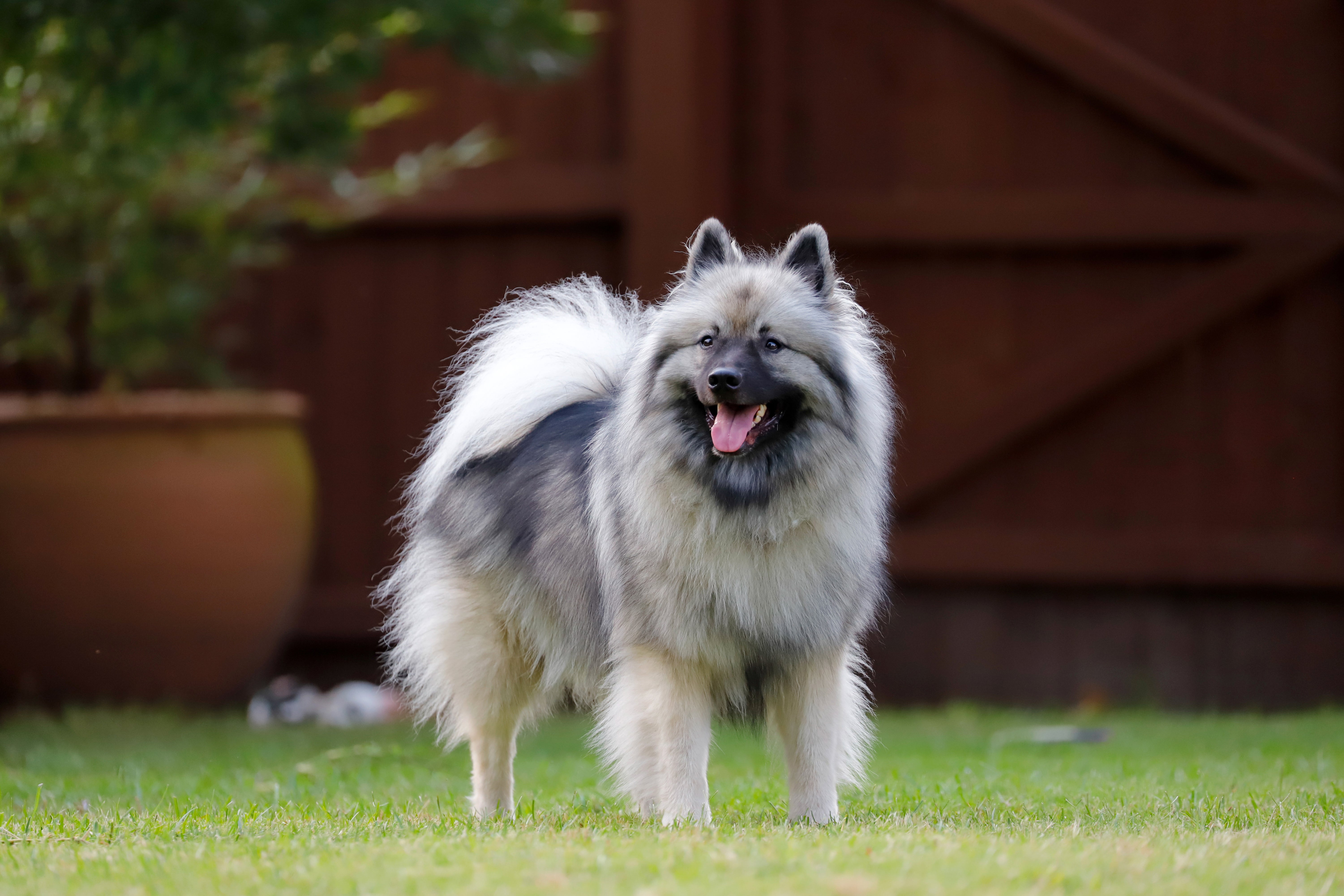Keeshond
The Keeshond is a sturdy, square-built dog. Designed for versatility, this spitz breed boasts a balanced physique rather than extreme specialization. Their gait is confident and energetic, covering ground with purpose. Beneath a thick, weather-resistant double coat lies a strong and athletic build. The outer coat, long and harsh, provides exceptional insulation against cold and damp conditions.
Breed characteristics carousel
Learn More
Need to Know
- Suitable for owners with some experience
- Extra training required
- Potential health issues
- Enjoys active walks
- Medium dog
- Some drool
- Requires very frequent grooming
- Chatty and vocal dog
- Barks, alerts, and may be physically protective/suspicious of visitors
- Could have issues with unknown dogs but gets along with known dogs
- May need additional training to live with other pets
- Great family dog
- Needs a large yard
- Can live in the suburbs
- Can be left alone occasionally with training
- AKC Registered Breed

Personality
The cheerful Keeshond didn’t get the nickname the “Smiling Dutchman” for no reason. Their happy-go-lucky demeanor is one of their many charms. Beneath that charming, fluffy exterior, though, lies a sharp-minded watchdog with a penchant for vocal expression.
While the exact origins of the Keeshond are unknown, we do know they've been part of Dutch life since at least the 18th century. Originally working as versatile companions and watchdogs, they later gained fame as "barge dogs," guarding small riverboats.
A twist of fate tied the Keeshond to a political uprising. The leader of the Patriot faction, Cornelius "Kees" de Gyselaar, owned a Keeshond, also named Kees. The pup became a symbol of the revolution, appearing in countless political cartoons. When the Patriots lost, many Keeshond owners hid their dogs to avoid association with the defeated side. To make matters worse, the rise of larger barges meant less need for small watchdogs.
Thankfully, the breed didn't disappear completely. Dedicated riverboat captains and farmers kept the Keeshond lineage going. In the early 20th century, Baroness van Hardenbroek spearheaded a rescue effort, reintroducing the breed to the world.
Keeshond owners know there's more to their furry friend than meets the eye. Behind that fluffy, wolf-like appearance is a smart, energetic watchdog with a penchant for barking. To thrive, Keeshonds need an active owner who can provide plenty of exercise, mental stimulation, and grooming. Their vocal nature makes them better suited for homes with space, rather than apartments.
Keeshonds are energetic dogs who love to be on the go. While they can manage with daily exercise, they'd much rather spend more time exploring with their favorite human. The Keeshond dog’s thick coats make them all-weather adventurers, so they won’t want to let a little rain or snow stop their outdoor fun. To keep their sharp minds engaged and prevent boredom (and excessive barking), make sure to include plenty of training, puzzle toys, and other mental challenges in their routine.
Keeshonds are adaptable dogs with a history of living in confined spaces, however, they are happiest in homes that offer them more space to stretch their legs. Their vocal nature also thrives better in quiet environments due to their inclination to bark at perceived threats, making busy apartment complexes a challenge. A fenced-in yard in the suburbs or countryside is paradise to these pups.
The Keeshond's thick, double coat requires dedicated grooming. Frequent brushing is a must to prevent matting and keep the coat in top condition. While bathing isn't needed as often, it's a time-consuming process due to the coat's density. Regular paw checks are also important to remove debris and prevent matting.
Keeshond dogs are intelligent but can be independent thinkers. Positive reinforcement, such as using treats and toys, is key to successful training. Given their heritage as watchdogs, recall training is especially important to prevent unexpected adventures.
Keeshonds are smart, playful pups who thrive in active households. Their energy levels and intelligence make them great companions for older children and teenagers. However, their tendency to be vocal might not be ideal for homes with young children who require quiet sleep environments.
The cost of a Keeshond from a breeder is significantly more than the cost of adopting one from a local shelter or rescue. The adoption fee usually covers additional items such as spaying or neutering, vaccines, and microchipping.

Learn more about feeding and caring for your Keeshond on Purina.
Did You Know?
- Keeshond dogs originally served as living foghorns on Dutch barges, barking to warn other boats of their approach.
- Keeshonds have charmed celebrities like Walt Disney, W.B. Yeats, and Princess Diana despite being a relatively rare breed.

